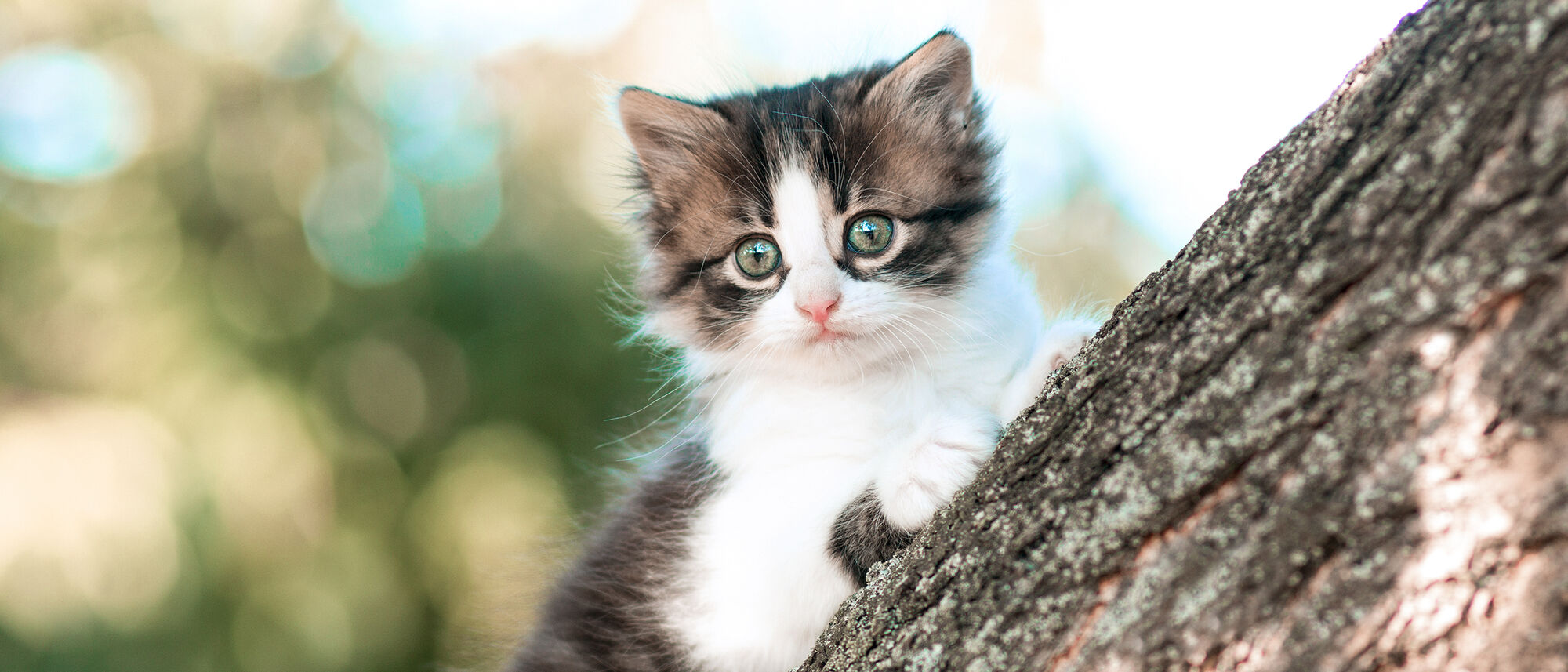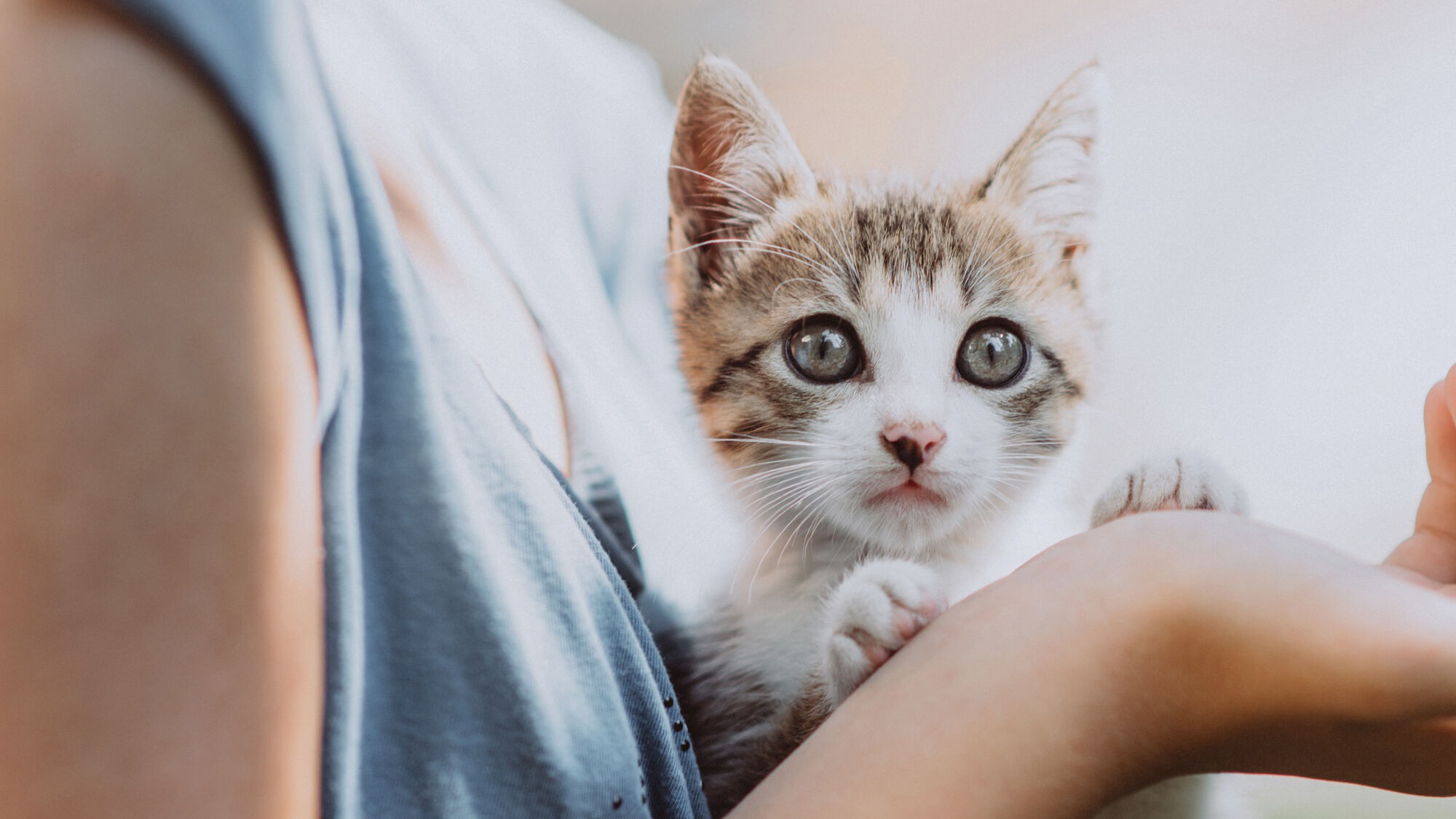Handling a Stray Kitten: Essential Care and Next Steps
Article

If you’ve found a kitten outside, your first reaction will be to try to help. But before you pick them up and rush to the nearest animal shelter or vet, it’s important to understand that not every stray kitten’s situation is the same.
Some need more care than others, and there are times when you can do more harm than good by removing lost kittens from the street. To understand why, let’s first look at where kittens come from.

One species. Different lifestyles.
Although it’s impossible to make an exact estimate, there are likely to be hundreds of millions of cats living in the world today, and many of them will be stray or feral cats, rather than pets.
The Humane Society of the United States estimates that 80% of kittens born in the USA are born outside, and similar figures are reflected in a number of other countries too. Therefore, any lost kitten you find outdoors is more likely to have been born to a free-roaming feral cat there, rather than just being abandoned.
Feral cats are the same species as pet cats, but they have adapted to a life outdoors, living freely in colonies and avoiding humans. When you come across stray kittens, it’s possible their feral mother is still nearby, waiting for you to leave so she can get back to caring for her litter. But it may not always be apparent.
That is why it's difficult to determine what to do if you find a kitten. It depends upon the situation and there isn’t one simple answer. Instead, a rescuer must decide what’s best for the kitten depending upon their circumstances.

Found a stray kitten? Think CASA.
Coined by author and influencer Kitten Lady as part of her collaboration with Royal Canin US, CASA is an acronym for the things you must consider when you find a kitten: their condition, age, situation, and your ability. To assess these four points you should:
Condition
Inspect the kittens to understand their condition. Are they alert and calm? Do they appear to be well-fed, not underweight or malnourished? If this is the case, the mother is likely taking care of them and so you can should not move them and instead inform a local charity or pet care professional who can safely remove the whole family.
However, if the kittens look underweight, are covered in waste, or seem unresponsive, they’ve probably been abandoned and so you should rescue them straight away.
Of course, they could also be someone’s pets. If they have collars, check for contact details.
Age
Situation
Ability
Before you take action, consider what you can do for the kittens. Are you in a position to provide effective foster care at home, or do you know someone else who can? Is there a local animal shelter with the ability to support the abandoned kittens?
Not every country or community has the resources available to help, so you’ll need to determine what options are open to you and contact a local pet specialist (animal shelter, veterinary practice, cattery) before you intervene.
What to do if you find a kitten aged 0-5 weeks old
Newborn kittens are entirely dependent on their mother for food, warmth, and care.
With intensive support, lost kittens aged between 0-5 weeks can survive without their mother, but it is much more beneficial for their continued development, health and wellbeing to remain with her, and so you should try to reunite her and the litter to give them all the best possible outlook.
First, identify how old the kittens are. If they look very small, seem uncoordinated, and appear to have missing teeth, they’re likely to be under 5 weeks old.

Next, find the mother. You could try watching the kittens from a distance in intervals over several hours/days and see if she returns, ask the neighbours, or try attracting her with food. Another alternative is to pour a ring of flour around the kittens and then leave. If you see paw prints when you return, you’ll know that the mother is nearby.
The next stage is to contact your local charity or rescue centre to inform them of the litter and whereabouts of the mother. They will then likely attempt to carefully trap the mother and collect the kittens.
If you’re fostering them yourself, you should seek advice from a vet or pet-care expert to learn how to keep the mother and kittens together safely, avoid stress, provide shelter, and provide the mother with the food and water she needs. The mother should take care of the kittens at least until they’re weaned by 7 weeks, at which point, the mother can be spayed and the kittens can be re-homed as pets.
If the mother is missing and the kittens are orphans, they’ll need to be raised by hand and bottle-fed. This should be done with a specialist kitten milk substitute. Royal Canin Babycat milk is developed specifically to provide all the important nutrients to support newborn kittens and help them continue to develop healthily. Remember, fostering is a commitment, and you should be comfortable with the responsibility before you proceed.
Babycat Milk
What to do if you find a kitten aged 5-12 weeks old
Kittens of this age are well-suited to adoption. At this point they’re weaned from their mother, can eat wet food, and are in their socialisation window – a critical period during which kittens are most responsive to new experiences.
If you can socialise a feral kitten at this age, they can usually be adopted as pets.
If you’re fostering the kitten, socialisation training should begin immediately to take advantage of the brief window when the kitten is open to change.
You can discover more about how to socialise a kitten in our socialisation and training guide.

What to do if you find a kitten aged 12 weeks old or more
If the found kitten appears to be more well-proportioned, but potentially a little slender, they’re probably over 12 weeks old.
At this point, the action you take will depend upon their current socialisation. If they’re relaxed, purring, and their ears are upright, they may be partly socialised or an abandoned pet and could make a good candidate for adoption once they’ve been trapped and spayed.
If they appear tense, hiss when you approach, and flatten their ears, they’re likely to be unsocialised or stressed. Again, it’s important for the cat’s wellbeing that you don’t approach them or trap them into a corner. Now that they’re outside of their socialisation window, they will need a lot of patience and specialist care to adapt to a life among humans.
In some cases, a charity or rescue centre may feel the best option is to rescue and sterilise them, before returning them to their colony. This process is known as Trap, Neuter, Return (TNR). The aim here is to capture stray or colony cats in safe traps, allow qualified vets to neuter the cat to avoid further reproduction and manage the population of street cats humanely. Find out more about population management and TNR with iCatCare.
Rehoming an older kitten can be incredibly difficult for them and if the socialisation goes poorly, it can leave them in a position where they’re unable to return to the colony or be adopted. No cat or kitten should ever be in a worse position due to human intervention, so it’s important to judge kittens on a case-by-case basis and that the decision is always taken by a vet or a pet-care expert.
A healthy start to life
Tailored nutrition for your kitten
Like & share this page